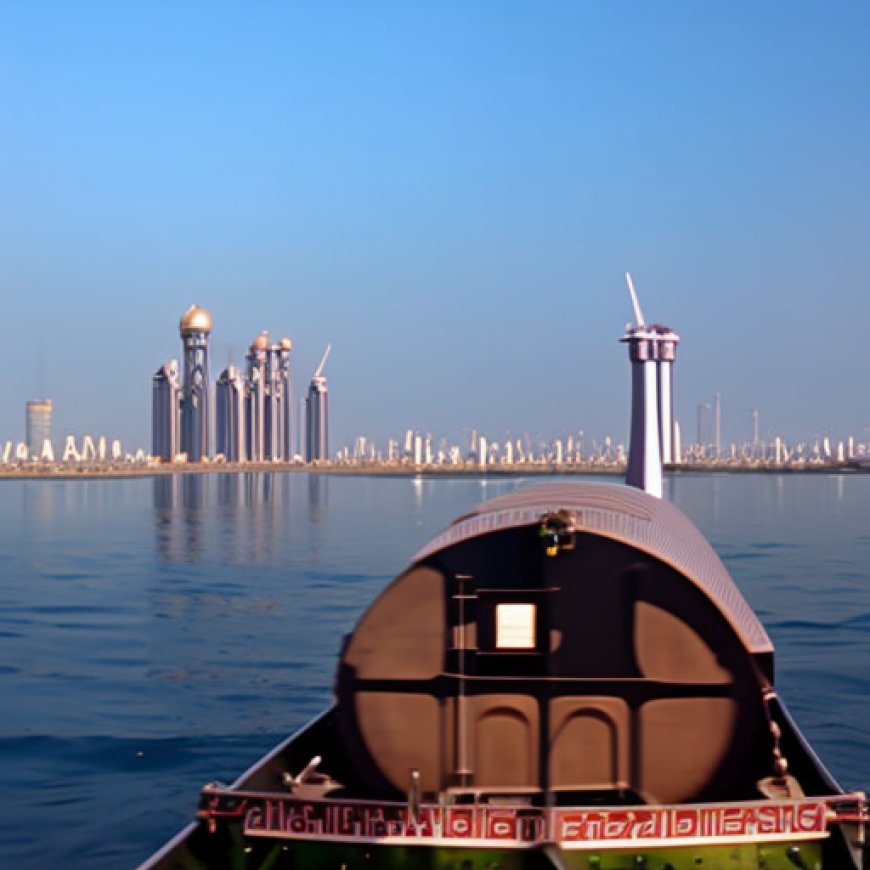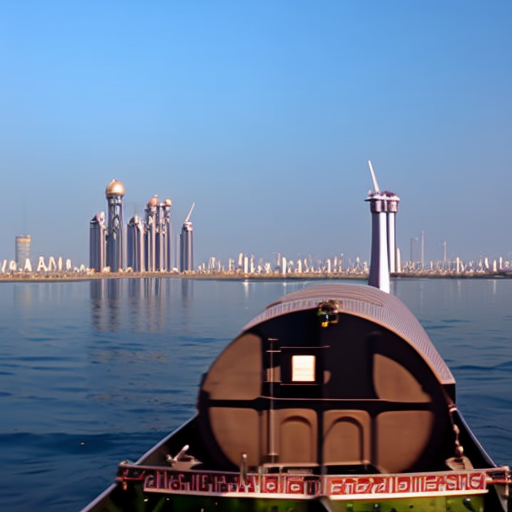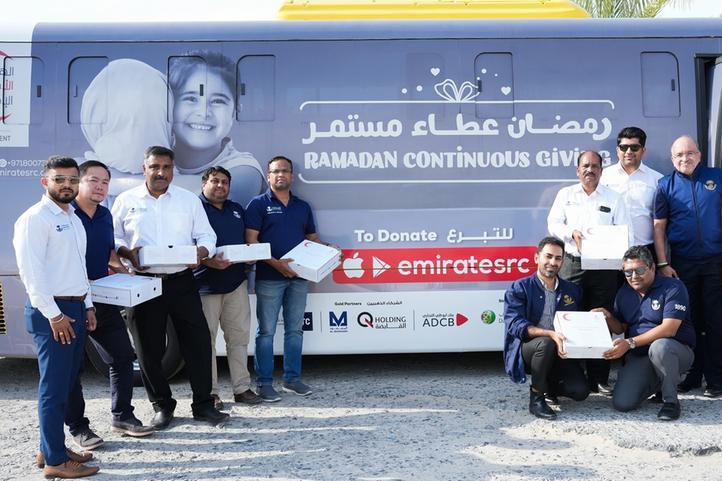Kanoo Energy embarks on a meaningful journey of corporate social responsibility this Ramadan
Kanoo Energy embarks on a meaningful journey of corporate social responsibility this Ramadan ZAWYA


Kanoo Energy Launches Corporate Social Responsibility Initiatives for 2024

Dubai – Kanoo Energy, a leading division of the Kanoo Group is proud to highlight the successful launch of its Corporate Social Responsibility (CSR) initiatives for 2024, with impactful activities completed in Dubai, Abu Dhabi, and Sharjah this week. These early efforts mark the beginning of a year-long commitment to meaningful community engagement and support across the UAE, embodying the spirit of giving this Ramadan and beyond.
Distribution of Food to Families in Need
- In Dubai, Kanoo Energy, in partnership with the Emirates Red Crescent, kicked off its CSR journey by distributing food to families in need during the holy month of Ramadan.
- Following the successful activity in Dubai, Kanoo Energy took its CSR mission to Abu Dhabi and Sharjah, where the company independently orchestrated a significant distribution of essentials and groceries to underprivileged families.
This initiative, driven solely by Kanoo Energy’s dedication to making a difference, highlights the company’s proactive and compassionate approach to community support.
“Our CSR activities are at the heart of who we are as a company,” expressed a Kanoo Energy spokesperson. “The successful completion of these initiatives across the UAE is just the start. With the entire team’s involvement, from all departments and Emirates, we are committed to a year filled with actions that have a real, positive impact on our communities.”
Emirates Red Crescent’s ‘Ramadan Continuous Giving’ Campaign
- These initial activities align with the broader goals of the Emirates Red Crescent’s ‘Ramadan Continuous Giving’ campaign, which aims to support 1.8 million individuals.
- Kanoo Energy’s participation in this campaign and its independent initiatives exemplify the company’s holistic approach to CSR, emphasizing not just charitable giving but also community engagement and environmental stewardship.
“Looking ahead, we have a diverse calendar of CSR initiatives planned, ranging from environmental conservation to health partnerships. Our goal is to touch lives in various ways, ensuring our contributions are meaningful and long-lasting,” added another representative from Kanoo Energy.
With these early successes, Kanoo Energy is setting a strong precedent for the remainder of the year. The company remains dedicated to its ethos of giving back, supporting environmental sustainability, and enhancing community well-being, further establishing itself as a pillar of social responsibility within the UAE.
-Ends-
Contact Information
- PAZ Marketing Management
- Ms. Zeina Akkawi: zeina.akkawi@pazmarketing.com
- Ms. Kristie Templa: kristie@pazmarketing.com
SDGs, Targets, and Indicators Analysis
1. Which SDGs are addressed or connected to the issues highlighted in the article?
- SDG 1: No Poverty – The article discusses Kanoo Energy’s distribution of food and essentials to underprivileged families, which aligns with the goal of eradicating poverty.
- SDG 2: Zero Hunger – Kanoo Energy’s partnership with Emirates Red Crescent to distribute food during Ramadan contributes to the goal of achieving food security and improved nutrition.
- SDG 3: Good Health and Well-being – The article mentions Kanoo Energy’s upcoming health partnerships, indicating a connection to this goal.
- SDG 11: Sustainable Cities and Communities – Kanoo Energy’s commitment to community engagement and support in Dubai, Abu Dhabi, and Sharjah aligns with the goal of creating inclusive, safe, resilient, and sustainable cities.
- SDG 17: Partnerships for the Goals – The collaboration between Kanoo Energy and Emirates Red Crescent demonstrates a partnership for achieving the SDGs.
2. What specific targets under those SDGs can be identified based on the article’s content?
- Target 1.2: By 2030, reduce at least by half the proportion of men, women, and children of all ages living in poverty in all its dimensions according to national definitions – Kanoo Energy’s distribution of food and essentials to underprivileged families contributes to reducing poverty.
- Target 2.1: By 2030, end hunger and ensure access by all people, in particular, the poor and people in vulnerable situations, including infants, to safe, nutritious, and sufficient food all year round – Kanoo Energy’s partnership with Emirates Red Crescent to distribute food during Ramadan contributes to achieving this target.
- Target 3.8: Achieve universal health coverage, including financial risk protection, access to quality essential healthcare services, and access to safe, effective, quality, and affordable essential medicines and vaccines for all – Kanoo Energy’s upcoming health partnerships aim to contribute to this target.
- Target 11.3: By 2030, enhance inclusive and sustainable urbanization and capacity for participatory, integrated, and sustainable human settlement planning and management in all countries – Kanoo Energy’s commitment to community engagement and support in Dubai, Abu Dhabi, and Sharjah aligns with this target.
- Target 17.17: Encourage and promote effective public, public-private, and civil society partnerships, building on the experience and resourcing strategies of partnerships – The collaboration between Kanoo Energy and Emirates Red Crescent demonstrates a partnership for achieving the SDGs.
3. Are there any indicators mentioned or implied in the article that can be used to measure progress towards the identified targets?
- Indicator 1.2.1: Proportion of population living below the national poverty line, by sex and age – This indicator can be used to measure progress towards reducing poverty based on the distribution of food and essentials to underprivileged families.
- Indicator 2.1.1: Prevalence of undernourishment – This indicator can be used to measure progress towards ending hunger based on the distribution of food during Ramadan.
- Indicator 3.8.1: Coverage of essential health services (defined as the average coverage of essential services based on tracer interventions that include reproductive, maternal, newborn and child health, infectious diseases, non-communicable diseases, and service capacity and access, among the general and the most disadvantaged population) – This indicator can be used to measure progress towards achieving universal health coverage based on the upcoming health partnerships.
- Indicator 11.3.1: Ratio of land consumption rate to population growth rate – This indicator can be used to measure progress towards enhancing sustainable urbanization based on the commitment to community engagement and support in Dubai, Abu Dhabi, and Sharjah.
- Indicator 17.17.1: Amount of United States dollars committed to public-private and civil society partnerships – This indicator can be used to measure progress towards effective partnerships based on the collaboration between Kanoo Energy and Emirates Red Crescent.
4. Table: SDGs, Targets, and Indicators
| SDGs | Targets | Indicators |
|---|---|---|
| SDG 1: No Poverty | Target 1.2: By 2030, reduce at least by half the proportion of men, women, and children of all ages living in poverty in all its dimensions according to national definitions | Indicator 1.2.1: Proportion of population living below the national poverty line, by sex and age |
| SDG 2: Zero Hunger | Target 2.1: By 2030, end hunger and ensure access by all people, in particular, the poor and people in vulnerable situations, including infants, to safe, nutritious, and sufficient food all year round | Indicator 2.1.1: Prevalence of undernourishment |
| SDG 3: Good Health and Well-being | Target 3.8: Achieve universal health coverage, including financial risk protection, access to quality essential healthcare services, and access to safe, effective, quality, and affordable essential medicines and vaccines for all | Indicator 3.8.1: Coverage of essential health services (defined as the average coverage of essential services based on tracer interventions that include reproductive, maternal, newborn and child health, infectious diseases, non-communicable diseases, and service capacity and access, among the general and the most disadvantaged population) |
| SDG 11: Sustainable Cities and Communities | Target 11.3: By 2030, enhance inclusive and sustainable urbanization and capacity for participatory, integrated, and sustainable human settlement planning and management in all countries | Indicator 11.3.1: Ratio of land consumption rate to population growth rate |
| SDG 17: Partnerships for the Goals | Target 17.17: Encourage and promote effective public, public-private, and civil society partnerships, building on the experience and resourcing strategies of partnerships | Indicator 17.17.1: Amount of United States dollars committed to public-private and civil society partnerships |








